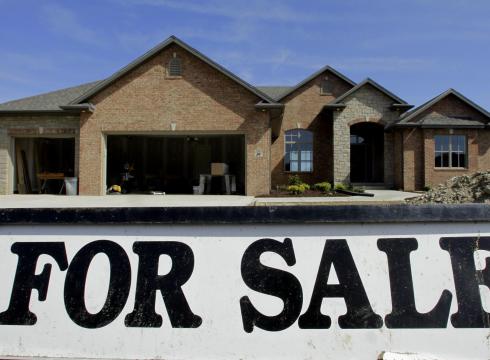Look Out Below: Home Sales Plunge: “Biggest Drop in 40 Months”

If foreclosure rates were dropping, suggested analysts, it means that home sales must be rising again.
Except they didn’t.
According to a report from the National Association of Realtors home sales plunged significantly in the month of September. So much so that it is the single largest drop in signed home sales in 40 months.
The National Association of Realtors said Monday that its seasonally adjusted pending home sales index dropped 5.6 percent last month from August to a reading of 101.6. That also pushed the index below its year-ago level, the first time that’s happened in nearly 2 ½ years.There are a variety of factors that may be at play here. Officially, the NAR reports that the drop in sales is a result of higher mortgage rates and the government shutdown.
There is generally a one- to two-month lag between a signed contract and a completed sale. The drop suggests final sales will decline in the coming months.
Via Sac Bee
…
The pending home sales data collapsed in September (and remember this is before the shutdown and was heralded at the time as buyers rushing to buy before the risk of the shutdown slowed acceptances). Affordability, argued by some serial extrapolators as still being ‘relatively’ positive – has drastically weighed on housing at the margin just as we argued previously. This is the first annual drop in 29 months, the biggest drop in 40 months, and the biggest miss against expectations in 40 months.
Via Zero Hedge
Of course, the shutdown didn’t happened until the month after the drop, so there’s that.
Rising mortgage rates certainly play a role, and those rates only declined to begin with because of massive Fed monetary intervention.
In fact, the Federal Reserve has made so much money available, that many economists believe the debt party is back.
We are very closely approaching 2007 levels of personal and business debt. Likewise, we’re reaching new highs on stock market exchanges and home prices seemed to be recovering to boot.
But the real question is… how can we possibly be in a recovery when millions of Americans remain unemployed and underpaid?
How is it possible that home prices were rising and sales increasing while a record 107 million Americans received government distributions?
How can we be out of a recession when nearly 50 million Americans – fully 23 million households, or about 20% – are dependent on food stamps?
The answer is simple.
The entire economy is now a complete sham.
The CPI economic growth index indicates our economy is growing at a rate of about 2.5%. Simultaneously, however, the official rate of inflation is 2.5% (nearly 6% if we look at the real numbers). What this means is that not only is the economy not growing, we are actually in a growth decline of at least 3%.
By economists’ definition, a recession is a period of time in which we experience negative economic growth for two quarters. Given we’ve seen a real decline in economic growth for at least the last five years, does anyone still believe we’re out of the recession?
Or is it possible that we are in a greater depression that continues to chip away at Americans’ wealth?
When experts say we’re out of the recession because the economy is growing, it’s important to understand that the purported “growth” is simply inflation making it’s way into the system.
It’s the very same reason for why stock markets have once again reached record highs (none of these company’s earnings justify their outrageous stock prices!), and why home prices didn’t continue to collapse.
They injected the system, literally, with trillions of dollars to keep prices afloat and avoid a deflationary depression.
The consequence, however, will be continued inflation – likely hyperinflation – in years to come.
The only other option is to scale back the Fed’s monetary expansion – in which case we see a complete collapse in prices.
The bottom line is that all roads to true recovery will be extremely painful.
No comments:
Post a Comment